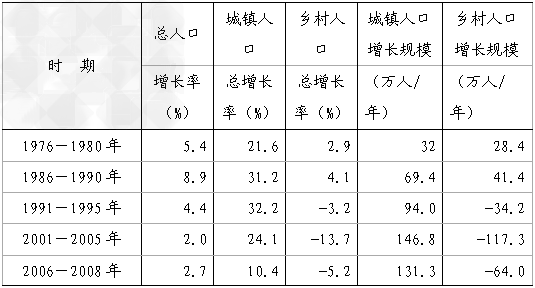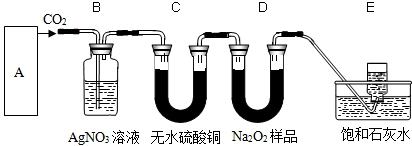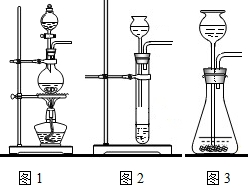阅读下列材料回答:
材料一:西晋:公元280年,全国人口有1616万人。据《晋书.地理志上》北宋:公元1110年,全国人口有4673万人。据《宋史.地理志》宋朝十万户以上的城市有40个,汴京、临安、长安、洛阳、南京都是人口超百万的城市,而同时期的欧洲国家3万人的城市就称大城市了。整个宋朝占世界的GDP的80%,这是中国占世界GDP比例最高峰。是中国历史最富有的朝代。
(1)结合所学知识概括,宋代人口增加的主要原因有那些?
________________________________________________________________________________
材料二:据《欧洲家庭史》记载,在19世纪的西欧,“父母——子女组合,看起来已是主要的家庭群组。但是当各自走出家外谋生后,所有孩子就离开了父母的家”。同时,“曾有普遍现象的生产性家庭单位现今成为例外了”,“没有生产性职能的家庭便成为一种众多的现象。”
(2)根据这段材料所反映的变化,说明19世纪的西欧社会的家庭发生怎样变化?结合所学知识简要说明其原因 。
________________________________________________________________________________
材料三:

不同时段江苏城乡人口增长(%)
(3)根据上表,概括1976到2008年间江苏城乡人口增长趋势,结合所学知识简要说明其原因。
________________________________________________________________________________
材料四:中国网消息到2008年,半数以上的世界人口将居住在城镇中,这是有史以来的第一次。到2030年,城市人口将有望达到50亿人,占全世界人口总数的60%。这是27日记者在联合国人口基金所做的《2007年世界人口状况报告》发布会上获悉的。
(4)根据材料指出人口城市化会带来那些问题?谈谈该如何缓解我国城市化中的人口压力?
________________________________________________________________________________
(1)经济:农业发展,生产技术提高,耕地面积扩大;市坊破界,商品经济发展,对外贸易繁荣;政治:分裂走向统一集权加强,赋税制度改革;民族融合,文化:传统思想和习惯影响。
(2) 变化:家庭职能、观念变化:生产职能转向非生产职能,年轻人独立意识增强。原因:经济:工业革命推动;政治:代议制度确立发展;思想:启蒙思想的影响等。
(3) 趋势: 90年代后乡村人口规模出现了减少,城镇人口增长势头强劲(城镇人口比重增加或城镇总人口增加)。原因:改革开放以来城市化的影响;经济发展;西方思想观念的影响等;国家政策的调整等。
(4) 问题:城市人口的迅猛增长,城市规模的无限制扩大,环境质量下降;贫富差距、城乡差距拉大;交通拥挤,居住条件差;增加就业困难,失业人数增多,高犯罪率等。解决: 积极发挥政府宏观调控作用,实施计划生育,控制城市人口规模,合理发展中小城市,建立卫星城;建立健全社会保障体系等;提高人口素质等,注意环保。


